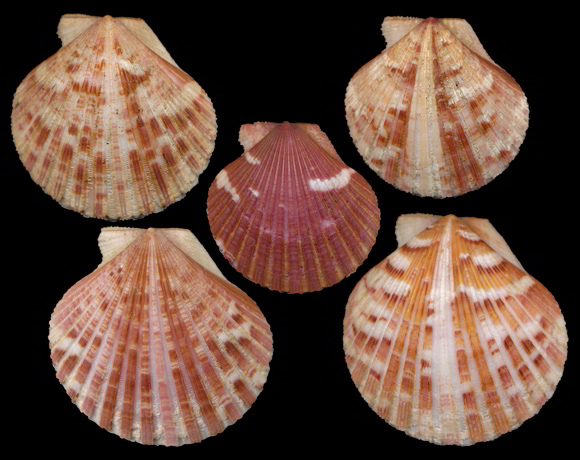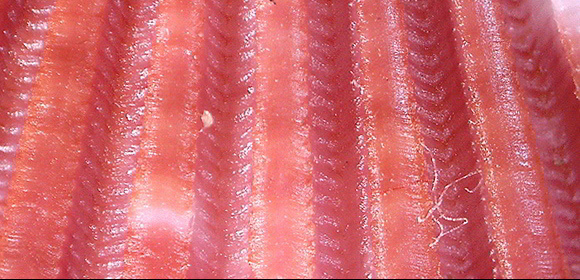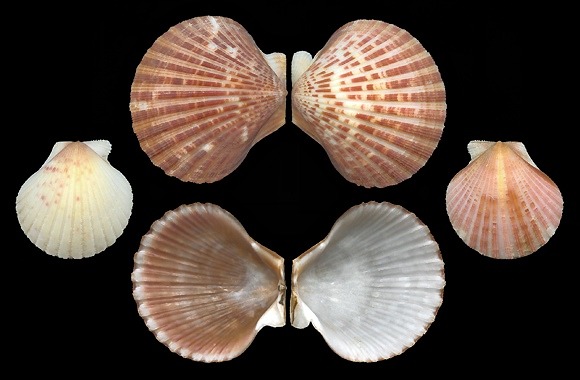
Original taxon: Pecten commutatus.
Trawled at 60-70m deep, Málaga, Andalucia, S. Spain. 20-30mm.
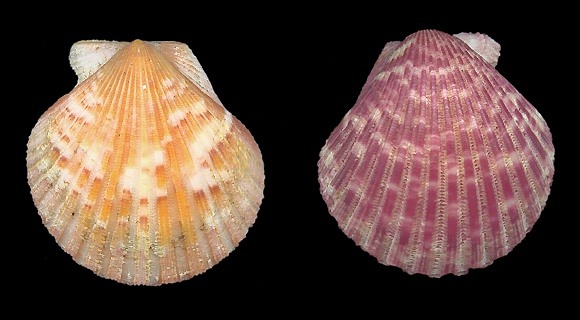
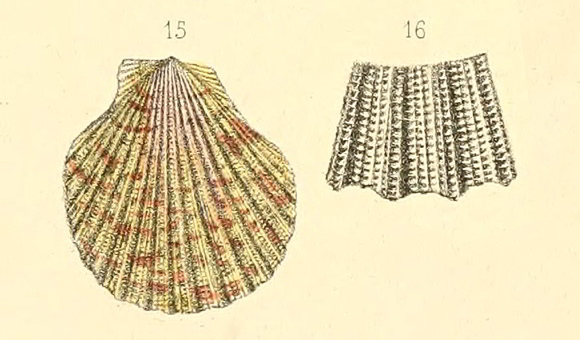
The shell was described after only two specimens from Sicily. Locard did better (1888). Here is Récluz’s decription:
« The shell is almost equivalve, round, convex on both sides, with thick yellowish white valves roughly covered with redish-brown stains on top, and with pink-red areas below. It has 17 to 18 rays or costae, sometimes divided by one or two longitudinal furrows crossed by transversal lines, with the interspaces crossed themshelves by transversal lines and adorned with a sharp crest; sometimes the rays are simple and smooth, with interspaces crossed by thin striae close together, but without the longitudinal crests. The auricles are very inequal; the anterior ones being trigonal, horizontal, and the posterior ones oblique, very narrow, and lengthened from top to bottom. The margins are deeply crenulate; the chondrophores are very small. […] The variant cannot be separated from the type: it has the same general shape, the same number of rays, the colour, the auricles etc. It differs by the lack of longitudinal furrows that divide the rays, by the exterior concentric lines and by the sharp crest that is visible in the interspaces. »
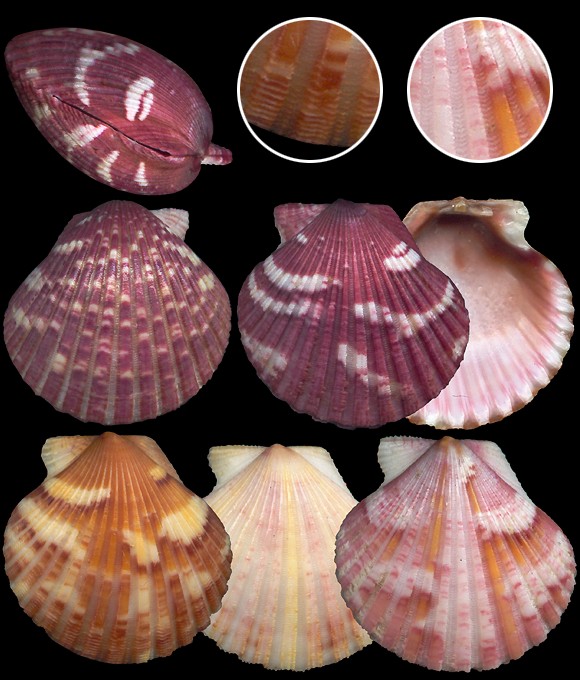
30m deep, in mud, Málaga. 21-23mm.
